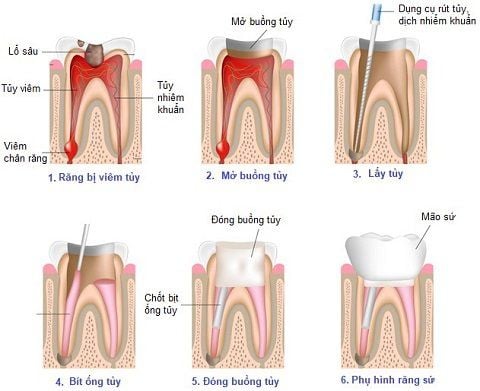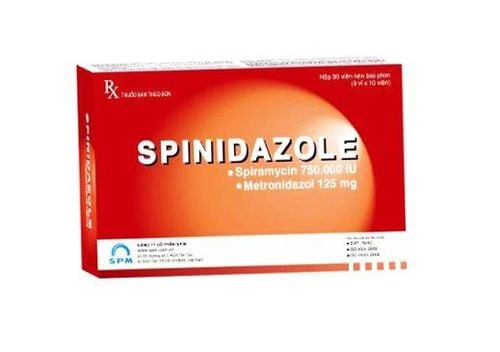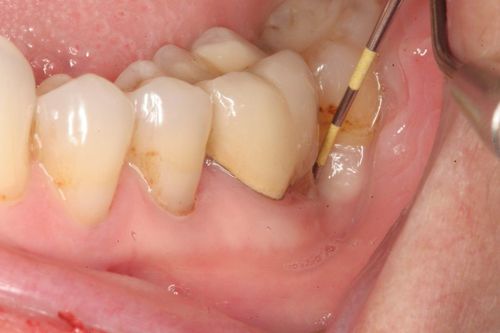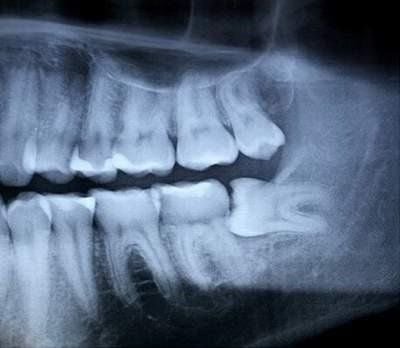This is an automatically translated article.
The article is professionally consulted by Master, Doctor Dang Tien Dat - Doctor of Odonto-Stomatology - Department of Medical Examination and Internal Medicine - Vinmec Ha Long International General Hospital.Tooth decay is a common factor that increases the risk of pulpitis. At this time, the patient suffers a lot of pain that can only be solved by removing the pulp and sealing the canal.
1. What is root canal treatment?
Root canal treatment (pulp treatment, also known as endodontic treatment) is the first method of intervention in cases of pulpitis.
This is a step-by-step process that aims to help clean the infected, damaged pulp inside the pulp cavity. Then, the canal containing the pulp will be cleaned, sealed and restored to the tooth. Only when doing so, will the infection be completely resolved and stop the pain for the patient.
2. What are the steps of root canal treatment?

2.1. For reversible pulpitis, the doctor will first take a bone marrow scan. Once the medulla oblongata is formed, the next steps are to prepare the sinus cavity. The doctor used an appropriate drill to widen the enamel margin, expose the deep sinuses, and remove the necrotic dentin tissue, preserving the healthy tissue. Next, the welding sinus will be cleaned with physiological saline and dried before being sealed.
Materials for root canal sealing are usually Composite, GIC, Amalgam on a layer of calcium hydroxide. The doctor uses a welding rod to take calcium hydroxide or MTA and cover the bottom of the welding sinus in layers from 1-2mm. Then, the welding surface is lightly pressed with cotton wool and smoothed. Finally, coating the Composite, GIC, Amalgam... to restore the rest of the weld sinus, check the bite and complete the restorative part in the top layer.
2.2. For irreversible pulpitis The steps of root canal treatment must always adhere to the principle of aseptic. In addition, the root canal must always be thoroughly cleaned to avoid re-infection before performing root canal shaping. At the same time, the welding step of the root canal system must be completely sealed in three-dimensional space.
Root canal treatment steps are carried out after pain relief for the patient. The surviving pulp was given regional or local anesthesia with 2% Xylocaine. When the patient has decreased local sensation, the doctor will conduct a pulpectomy, remove the pulp chamber and root canal with a round-headed diamond drill to open the way into the pulp chamber, Endo Z drill to open the entire ceiling of the pulp chamber. At this time, the extraction of the chamber and root marrow by pricking should be most complete.
After the pulp has been taken, the empty pulp chamber creates favorable conditions for the doctor to probe the number, size and working length of the canal with appropriate instruments. Next, the root canal system will be shaped and cleaned with solutions such as physiological saline, 3V hydrogen peroxide, and 2.5-5% sodium hypochloride. If imaging is needed to enlarge the root canal system, the doctor will need to use rotary files and hand-held files, which can be X-rayed later.
Finally, the root canal system will be sealed using longitudinal and transverse compression techniques with hot and cold gutta-percha and crown restoration with suitable material.
The steps of root canal treatment should be careful to avoid further damage to the pulp in the case of reversible pulpitis or damage to the tooth tissue in the case of irreversible pulpitis. In addition, intramedullary intervention also has the risk of causing periapical inflammation, granulomas, root cysts or distant complications such as maxillary sinusitis, endocarditis (although quite rare).

Please dial HOTLINE for more information or register for an appointment HERE. Download MyVinmec app to make appointments faster and to manage your bookings easily.














